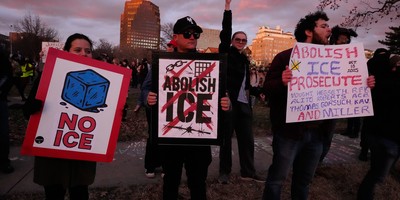I had recently moved to Los Angeles when the nation received the news in early June of 2004 that former President Ronald Reagan’s health was rapidly declining. In true LA fashion, helicopters began flying overhead and news trucks zipped near my apartment on the West Side. I knew Reagan’s home was fairly close by, but until that day, I didn’t realize how close: a mere two miles away.
When news came of Reagan’s death, the outpouring of support in Southern California was immediate and phenomenal. People stood in mile-long lines, lasting many hours, to board shuttles to his Presidential Library in Simi Valley just north of LA in order to view his casket. I recall riding back on the shuttle from the Library after the viewing (one of over 105,000 who did so during the course of 3 days) just as the beautiful western sky was turning to dusk. As we crossed over the Ronald Reagan Freeway, there were cars lined up along the side of the road with their headlights on, for as far as the eye could see, trying to get off at the Library’s exit. It was like something right out of the end of Field of Dreams (which was the released the year Ronald Reagan left office, incidentally).
A similar outpouring happened in Washington, DC, where again over 100,000 viewed his casket. On the day of his funeral (which was this week eight years ago) hundreds of thousands more lined the procession in Washington and in Southern California. As Field of Dreams’ character Terrance Mann, played by James Earl Jones, would say, “People most definitely came.”
This public display of adoration and respect was a reflection of what Americans thought of the 40th President. Seemingly unfathomable in today’s political climate, Reagan won his 1984 reelection with 49 of 50 states, topping his 1980 landslide of 44 states. Neither number has been matched since. He sold me, when I was 13 years old: I spoke in support of him at an all-school assembly, and I’m happy to report he won that election far-and-away too. Later, I was thrilled when President Reagan came to speak at West Point, while I was a cadet there.
Recommended
Why did so many come to love and believe in him so much? As he humbly acknowledged in his Farewell Address, people nicknamed him the Great Communicator, but he felt what was really the case was that he was communicating great, time-tested ideas, which resonated as true. He noted they didn’t “spring full bloom from my brow, they came from the heart of a great nation -- from our experience, our wisdom, and our belief in the principles that have guided us for two centuries.”
One of those principles was a belief in free market capitalism and faith in the American people to build and create their own Field of Dreams rather than believing somehow the government might do it for them. It should be remembered that Reagan inherited an economy every bit as bad as Barack Obama’s and in some ways worse. Unemployment peaked at 10.8% after Reagan took office versus 10% under Obama with the added stresses of double-digit inflation and interest rates. Reagan won support for a basic plan of cutting tax rates across the board, limiting government spending and reducing regulations on businesses. His favorite President, Calvin Coolidge, had administered the same medicine to an ailing, recession bound economy in the 1920s, when Reagan was coming of age, and it worked like a charm.
Reagan exhorted as he took office in the early 1980s that it was "time to reawaken this industrial giant” of the American economy again. During Reagan’s two terms, the economy grew a third larger (that is the size of the entire economy of Germany). Unemployment dropped to under 5%, as the economy created over 19 million new jobs. Meanwhile, revenues to the Treasury doubled during his two terms, due to the tremendous economic growth. By this point in 1984, the Reagan economy was adding 360,000 jobs per month with a population of 85 million less than today. By way of contrast, Obama's added just 69,000 in May, 77,000 in April. The 4 million jobs Obama likes to brag about adding since he took office, Reagan’s economy added in the year 1984 alone.
It is little wonder a movie with the catch phrase, “If you build it, they will come” would hit theaters in the wake of the Reagan Presidency. Looking back on the decade in his Farewell Address, he said, “They called it the Reagan Revolution…but for me it always seemed more like the great rediscovery, a rediscovery of our values and our common sense….[A]s long as we remember our first principles and believe in ourselves, the future will always be ours.”
I have no doubt his message would be the same for us today. It is not too late to rebuild the Field of Dreams.

























Join the conversation as a VIP Member